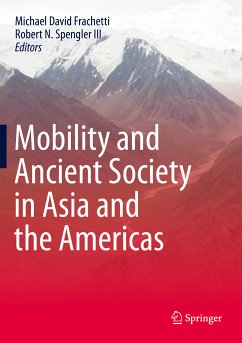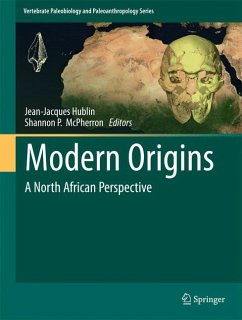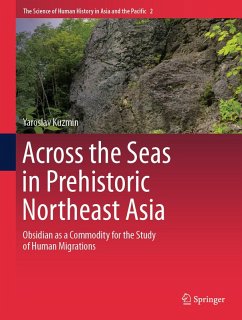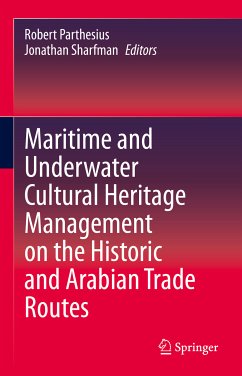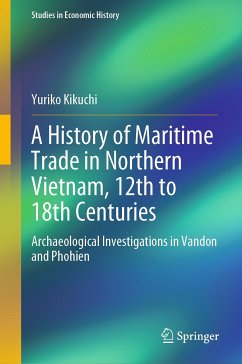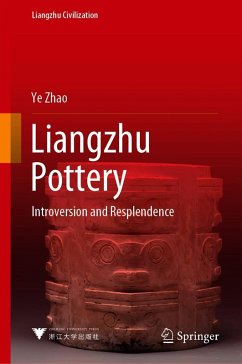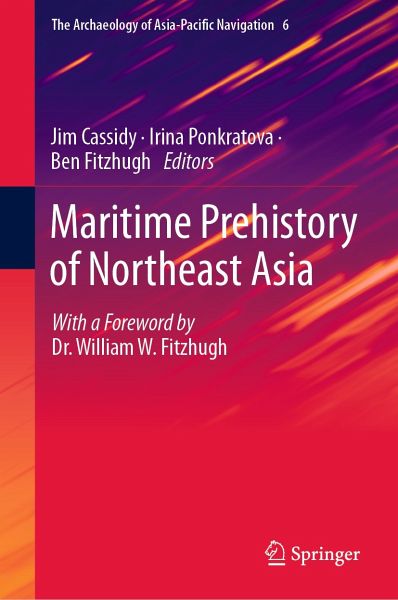
eBook, PDF
Maritime Prehistory of Northeast Asia (eBook, PDF)
With a Foreword by Dr. William W. Fitzhugh
Redaktion: Cassidy, Jim; Fitzhugh, Ben; Ponkratova, Irina

PAYBACK Punkte
40 °P sammeln!





Maritime Prehistory of Northeast Asia (eBook, PDF)
Dieser Download kann aus rechtlichen Gründen nur mit Rechnungsadresse in A, B, BG, CY, CZ, D, DK, EW, E, FIN, F, GR, HR, H, IRL, I, LT, L, LR, M, NL, PL, P, R, S, SLO, SK ausgeliefert werden.
Jim Cassidy completed a Ph.D. at the University of California Santa Barbara in 2004 with a dissertation focusing on the maritime region of the Russian Far East. He has taught classes in Anthropological Archaeology at university level institutions, and was employed as a Cultural Resources Regional Program Manager for the US Navy, retiring in 2011. Since then, he has been an associate with the Maritime Museum of San Diego in various capacities. Dr Cassidy has extensive experience in archaeological survey and excavations projects. His geographic areas of research interest include maritime societies across the north Pacific rim, with particular emphasis on the Russian Far East and the California Channel Islands. His theoretical perspectives are focused on cultural and behavioral ecology, as well as prehistoric maritime technological innovations, and methodological skills include stone tool analysis and reduction processes, and ceramics fatty acid residue analysis. He is also trained in geographic information systems (GIS). He has an extensive publication history, including in American Antiquity, British Archaeological Record International Series, Journal of Anthropological Archaeology Report, Journal of North Pacific Prehistory, as well as a volume entitled California Maritime Archaeology, the Maritime Museum of San Diego's Journal Mains'l Haul, and numerous articles published by the Russian Academy of Sciences, Far Eastern Branch. Irina Ponkratova is a Leading Researcher and Associate Professor in archaeology at the Northeastern State University, in Magadan, Russia. Her research interests include the Stone Age of the Kamchatka Peninsula (Russia) from the end of the Pleistocene to the late Holocene. She is the Director of excavations at the world famous Ushki site in Kamchatka, where numerous important discoveries have been made in recent years. These include new evidence of the use of paints dating to about 13,000years ago, discovery of the earliest ceramics for this region, evidence of the possible use of domestic dogs as an innovation for transport technology dating to about 9000 years ago and evidence relating associated with migrations across the North Pacific Rim about 13,000 years ago. In addition, she is a recognized scholar of the ancient ceramics of Northeast Asia. Her recent research includes evidence of the origin and functions of the earliest tattoos found in the North Pacific region. Ben Fitzhugh is a Professor in the Department of Anthropology, as well as the Director of the Quaternary Research Center, at the University of Washington. His research focuses on human-environmental dynamics and archaeological histories of maritime/coastal hunter-gatherers especially in the North Pacific. This research addresses questions of human vulnerability and resilience in remote subarctic environments. He collaborates widely with scholars across a range of disciplines in atmospheric, earth and biological sciences and take an historical ecological perspective on human adjustments to (and of) environments in which they live. Recent efforts include the development of international collaborations to explore the ecological and archaeological histories of the North Pacific Rim. He is coordinating a comparative marine ecological working group called Paleoecology of Subarctic Seas (PESAS), which brings together paleoclimate, paleoecology, archaeology and history to investigate similarities and differences in the human-environmental co-evolution of the subarctic North Pacific and North Atlantic since the Last Glacial Maximum. He is also a founding member of the UW Future of Ice Initiative.
Produktdetails
- Verlag: Springer Nature Singapore
- Seitenzahl: 422
- Erscheinungstermin: 3. Juni 2022
- Englisch
- ISBN-13: 9789811911187
- Artikelnr.: 64144237
Für dieses Produkt wurde noch keine Bewertung abgegeben. Wir würden uns sehr freuen, wenn du die erste Bewertung schreibst!
Eine Bewertung schreiben
Eine Bewertung schreiben
Andere Kunden interessierten sich für



